Magic Pond #1: Saturday, June 17
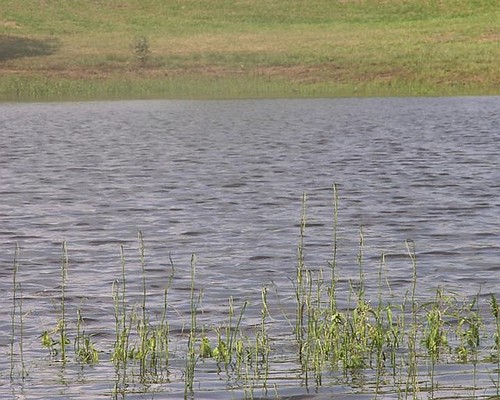
The "post office pond" on Saturday had looked deceptively empty. Only while I was filming a video of Atlantic Bluet damselflies did I hear Mary suddenly shout, "Look up!" -- as a flock of eight white ibises glided in for a landing.
Before then, assuming there was no wildlife around to be disturbed by my presence, I had made my way down to the water's edge....
Unlike the retention pond around the corner from our home, the post office pond keeps its water except in times of drought. Tropical Storm Alberto had filled it almost to overflowing, water backing up spillways.
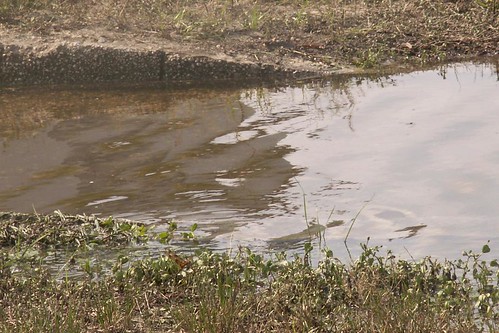
I saw the Bluets first.
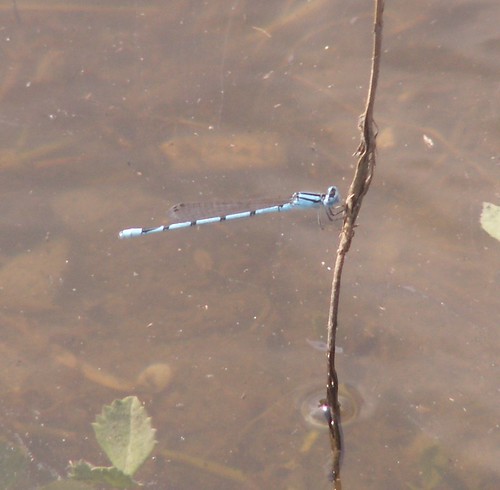
More detail is in the large view. (Click the magnifying glass for this and subsequent large views.)
Enallagma doubledayi, Family Coenagrionidae (Narrow-winged Damselflies). According to Bugguide.Net, these damsels range along southeast and northeast coastal areas and fly from mid-May to late October.
The University of Florida adds, "This damselfly species is one of several where the male holds the female above the water so she will not fall in (and die) while laying eggs. The male holds her by the neck with his pincers while she inserts eggs into the tissues of submerged plants. Once she has finished laying her eggs, the male helps her out of the water."
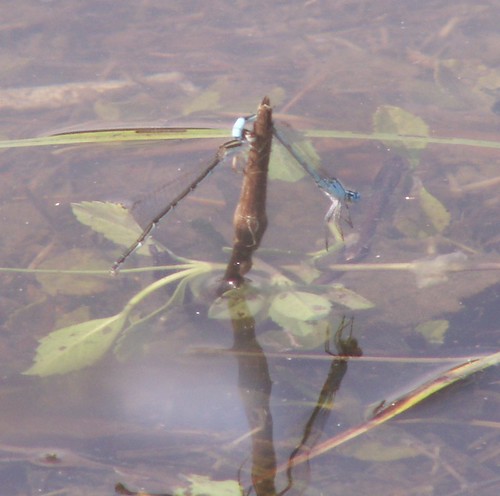
More detail is in the large view.
The female at left is laying eggs while the male at right holds her out of the water -- though she seems to have found purchase on the plant. At first I didn't realize what was happening here. It seemed the pair was mating, but for that to happen the tips of their abdomens should touch. I subsequently read that pincers occur at the tip of the abdomen as well.
Mary was bent over by the spillway, looking for minnows. Instead, she saw tadpoles and called me over.

I have no idea what species (singular or plural) they are. The video Polliwog's Cakewalk takes its name from "Golliwog's Cakewalk," from Claude Debussy's Children's Corner Suite.
A male Blue Dasher dragonfly perched not far off. At first I'd thought it was a Dragonhunter (which, as the name implies, preys on other dragonflies), owing to its green eyes and the color and shape of its thorax. But the blue abdomen places this one squarely in the Blue Dasher camp. Thanks to Elizabeth Moon for the ID.
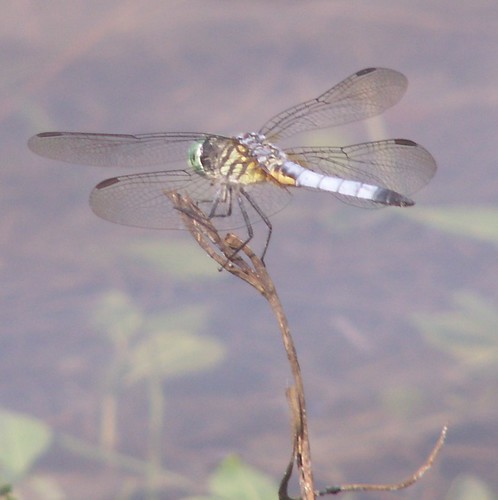
More detail is in the large view.
Pachydiplax longipennis, Family Libellulidae (Common Skimmers). According to Bugguide.Net, these dragonflies range across "much of the United States, and just edging into Canada. In the United States, absent from the Dakotas and the Rocky Mountain region. Range continues into Mexico." I'd photographed a female Blue Dasher back in March.
The video Dragon and Damsels opens with the Blue Dasher flying off.
Mary's call of "Look up!" at the end of this video heralded the ibises' arrival.
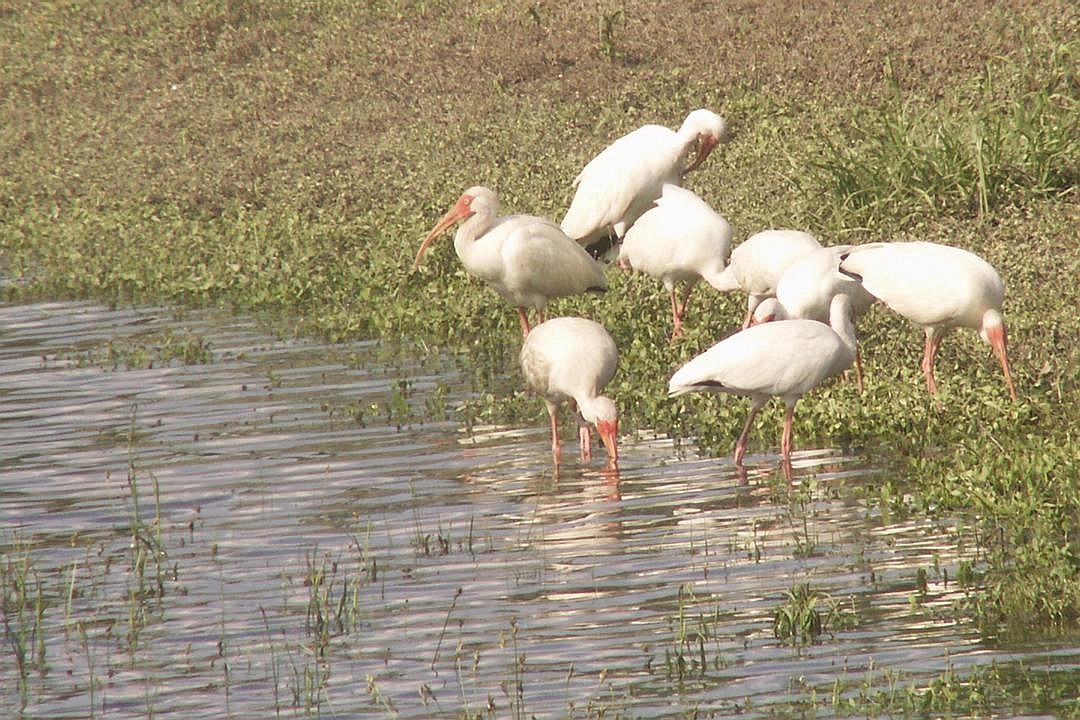
We backed up from the pond, edging toward the road. I stopped at the sight of swallow-tailed kites overhead.
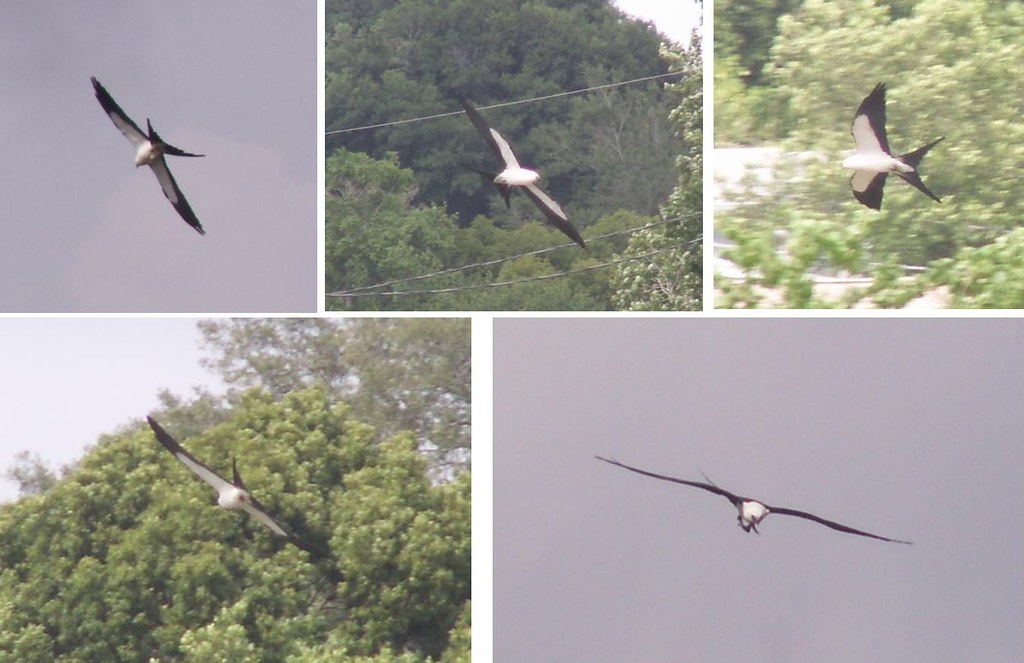
Elanoides forficatus, Family Accipitridae (hawks, eagles, etc.). According to eNature.com, "The Swallow-tailed Kite is the most aerial of our birds of prey. It catches much of its insect food on the wing, snatches lizards from the trunks of trees, eats what it has caught while flying, drinks by skimming the surface of ponds and marshes, and even gathers nesting material by breaking dead twigs from the tops of trees as it flies past. Formerly more abundant, this distinctive bird nested as far north as Minnesota and Illinois, but habitat destruction and indiscriminate shooting reduced it to its present range."
Writes John E. Cely at the South Carolina Department of Natural Resources, "Currently, the kite occupies a remnant breeding range of seven, possibly eight, southern states that historically included at least 21 states.... It is state-listed by South Carolina Department of Natural Resources (SCDNR) as an endangered species and a high priority species of concern by Partners in Flight (PIF)."
I'd photographed the kite above three days earlier, on June 14. This time I took a video of it in flight. (Note: This video has some loud wind noise.)
On Sunday the 18th we took a six-mile jaunt that included the "library pond," along a route I usually drive rather than walk. I now suspect that the library pond is known among the birds as the "ibis kiddie pool." More to come.











1 Comments:
We used to call dragonflies sewing needles and were afraid as kids that they would sew us.
One of these days I will try to figure out how to post the videos. I would try to post the poetry reading but the poem got cut off before the finish so it doesn't seem worth trying to figure it out just yet.
Post a Comment
<< Home